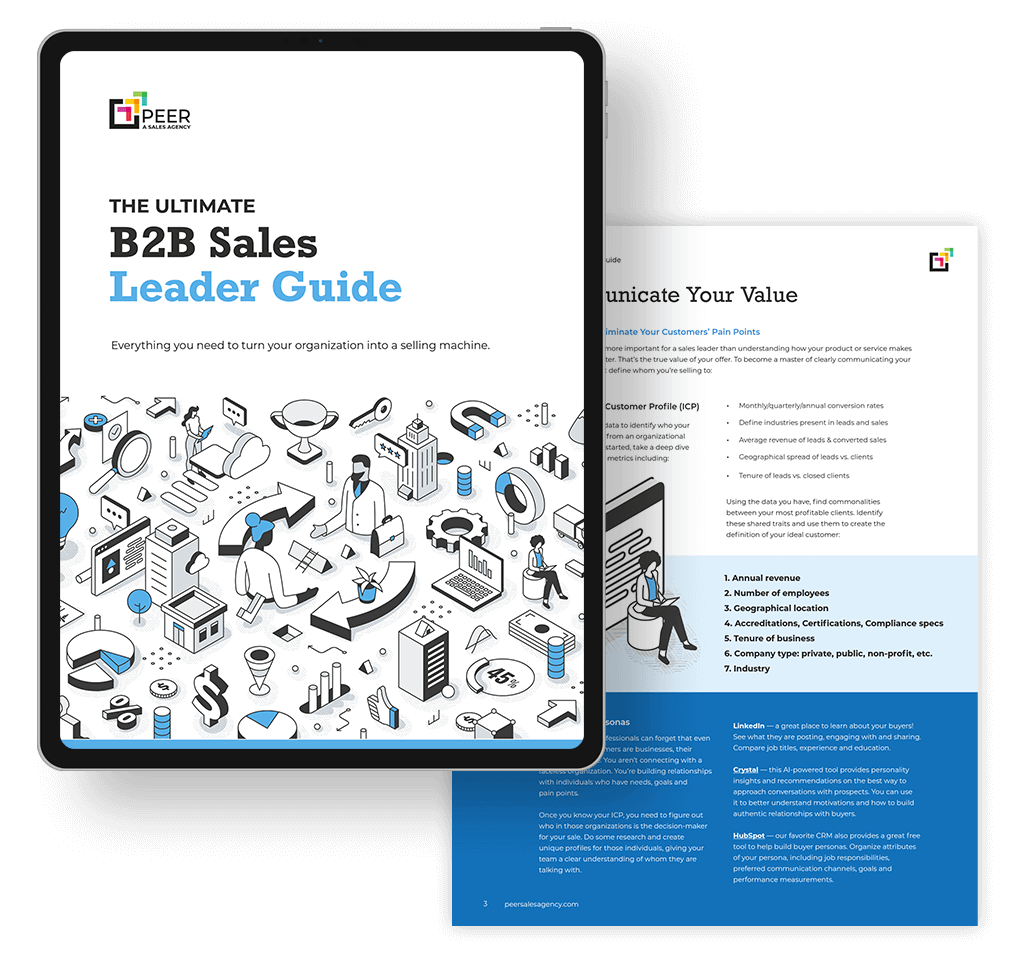So, your boss has tasked you with finding more leads for the sales team. Or, you are tired of hearing from your sales reps that they can’t close deals because there aren’t enough leads. But how do you design a lead magnet (when you’re not a graphic designer)?
Lead generation is a top priority for 61% of all sales and marketing professionals.
Right now, you may be overwhelmed at the mere utterance of the word design. Never fear! You too can wow your sales reps (and your boss) by using short-form lead magnets to funnel new leads to your sales team.
What is a Short-Form Lead Magnet?
A short-form lead magnet is any piece of content you can give to a potential prospect in return for their contact information. As you may have guessed, it’s shorter in nature. Examples of short-form lead magnets:
- Checklists
- Cheatsheets
- Quick tip guides
- Templates
- Swipe files
What’s the difference between a short-form and long-form lead magnet?
Long-form lead magnets are, you guessed it, just longer in length. Examples include:
- Research papers
- Whitepapers
- Industry trend reports
- Ebooks
Which one is best for me?
If you are already designing lead magnets for your company and generating leads like crazy, then maybe a long-form version would be worthwhile! (Also, you probably don’t need this article.)
But, as I’ve mentioned in other posts, 43% of people admit to skimming blog articles so I reserve recommendations to create long-form content for companies who have already built an advanced content marketing machine. These marketing programs are looking for ways to test new formats and explore more complex solutions.
How short-form content generates leads
The goal of all lead magnets is to design something that will entice a prospect to share their email address and company name.
In a previous post, we covered how to create an outline and how to write your lead magnet (even if you’re not a writer).
You want to have your lead magnet finished before you start any design work. Getting it into a designed format that is not only informative, but also visually appealing will be MUCH easier if you’re working with the finished content.
How to design a lead magnet?
There are really only 5 steps to designing a lead magnet:
Step 1: Review your outline and content to formulate an idea of how best to layout the content on the page.
Step 2: Think of how the form of the content should follow its function. In other words, the kind of content you wrote will influence your design.
- If it’s a checklist, create a list that your audience can print off and quickly reference.
- If it’s a step-by-step guide, make the steps clear and easy to digest.
- If it’s a swipe file or template, make sure the file is easy to modify and save many times. These are things like spreadsheets, fillable PDF’s or forms.
- If it’s a cheatsheet, think about ways to showcase the information that can be clipped and kept near a computer or in a wallet or notebook.
If it’s so valuable that they keep it on their desks or add it to their virtual reminder board, YOU HAVE WON!
Step 3: Design the file. You can either design it yourself using a tool like Canva or find a designer to do it for you. My rule of thumb for choosing whether to do it yourself or find someone with this talent is to estimate the value of your time as a billable rate and then compare that to the cost of paying someone else.
Step 4: Add a Call-to-Action to the Lead Magnet. Include a message about your services or solution on the page along with contact information. All good sales content should make an ask of some sort. What is the next logical step for the prospect to take?
- Request a demo
- Sign-up for a free trial of your software service
- Schedule a meeting
- Register for an upcoming webinar
Step 5: Share it with your sales team and get feedback. In order to ensure you get valuable and constructive feedback, make sure to give them specific parameters about the type of feedback you are looking for:
- How would you use this to help a potential prospect?
- Does the tone feel like it appeals to our prospects?
- Is it the right length?
- Is it easy to understand?
Once you have the feedback from your team and you’ve got the edits made to the design, you are ready to release it out into the world.
We cover how to add lead magnet content to your website and how to promote your content offer in other posts.
In the meantime, there are two cardinal rules in content creation:
- Done over perfect. The worst piece of lead magnet content is an unfinished piece. You will never be completely happy with anything. It’s more important to get it done than to try and make it perfect.
- It must be valuable. Don’t bother creating lead magnet content if it doesn’t create value for your prospective customer. Gone are the days where people would provide an email address for anything that a company put out. Your sales slicks and case studies are not valuable to them. Those items should be available for download without an email address or other contact information provided. A lead magnet must answer a question or provide expertise.
Good luck with your design process. Have fun with it and show your sales team (and your boss) that big results can come from short-form lead magnets.
You can also learn more about how Peer can help you get more leads!
Frequently Asked Questions
A lead magnet is any piece of content you can give to a potential prospect in return for their contact information. The lead magnets can be in long or short form.
On the technical aspect, it should have a headline, Information about the lead magnet, a persuasive argument, and a descriptive CTA. Offer expert insight, insider knowledge, or some other creative and unique solution that solves a real problem for people.
Some of the short-form lead magnet types include:
• Checklists
• Cheatsheets
• Quick tip guides
• Templates
• Swipe files
Some of the long-form lead magnet types include:
• Research papers
• White papers
• Industry trend reports
• Ebooks



